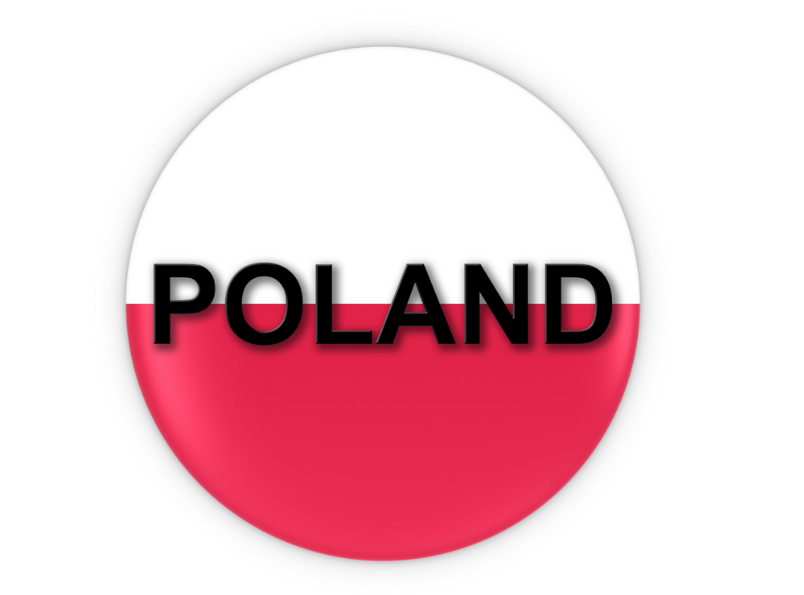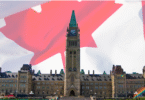Poland is one of the most beautiful countries in Europe. It has colorful old towns and castles, a peaceful countryside and snowy mountains, so many beautiful things for everyone to enjoy. You may be planning a holiday, visiting family, attending an event, or exploring new business opportunities, Poland is ready to welcome you with open arms.
But if you’re not from a visa-free country, you’ll need a Schengen Visa to enter Poland.
In this article, I’ll walk you through the full process of applying for a Polish Schengen Visa to help make the process an easy one for you.
What is a Schengen Visa?
A Schengen Visa allows you to visit Poland and 25 other European countries that are part of the Schengen Zone. With just one visa, you can move freely between these countries for up to 90 days within a 180-day period.
What is a Polish Schengen Visa?
A Polish Schengen Visa is a short-stay visa that allows you to visit Poland for up to 90 days within a 180-day period. It’s part of the Schengen Agreement, which means once you enter Poland with this visa, you can also travel to other Schengen countries without needing a separate visa for each one.
Types of Polish Schengen Visas
There are different reasons why people apply for this visa. Your reason for travel will determine the type of visa you apply for:
- Tourist Visa: If you’re visiting Poland for fun, sightseeing, or vacation.
- Business Visa: If you’re going to Poland for meetings, business deals, or conferences.
- Visit Visa: If you’re visiting friends or family who live in Poland.
- Transit Visa: If you’re just passing through a Polish airport on your way to another country.
- Medical Visa: If you need to go to Poland for medical treatment.
No matter your reason, the process for applying is very similar. You just need to show documents that match the purpose of your visit.
What You Can and Cannot Do with a Polish Schengen Visa
You can:
- Stay in Poland and other Schengen countries for up to 90 days.
- Travel freely within the Schengen Area.
- Visit for tourism, business, or short-term studies.
You cannot:
- Work or take up a job in Poland.
- Stay longer than 90 days without applying for a long-term visa.
- Use it to settle permanently.
Who Needs a Polish Schengen Visa?
Not everyone needs a visa to enter Poland. It all depends on your nationality and the type of passport you hold.
Countries That Need a Polish Schengen Visa
If you’re from a country that does not have a visa-free agreement with the Schengen Area, then you must apply for a Schengen visa before traveling to Poland.
Some common countries whose citizens need a visa to visit Poland include:
- Philippines
- China
- Nigeria
- India
- Pakistan
- Ghana
- Kenya
- Egypt
- South Africa
- Bangladesh
If your country is not on the Schengen visa-free list, you will need to apply for a Polish Schengen visa.
Countries That Do Not Need a Visa
If you’re from any of these visa-exempt countries, you can visit Poland (and other Schengen countries) without a visa for up to 90 days:
- United States
- Canada
- United Kingdom (only for short stays)
- Australia
- Japan
- Brazil
- South Korea
- New Zealand
However, even if you don’t need a visa, you still need a valid passport and you may be asked to show proof of accommodation, return tickets, or financial means at the border.
When Should You Apply for a Polish Schengen Visa?
Timing is very important when applying for a visa. If you apply too early or too late, your application might be rejected or delayed.
Best Time to Apply
You should apply for your Polish Schengen Visa:
- At least 15 days before your planned travel date.
- No earlier than 6 months before your trip.
- No later than 3 weeks before your trip (to be safe, this gives room for delays).
Why Is Early Application Important?
Applying early helps you:
- Avoid last-minute stress.
- Have enough time to fix any missing documents.
- Reschedule appointments if needed.
- Plan your trip with confidence.
If you are traveling during busy seasons (like summer or holidays), apply as early as possible. Embassies get a lot of visa applications during these periods and processing times may be longer.
Polish Schengen Visa Requirements
To get your Polish Schengen visa approved, your documents must be complete, correct, and organized. Let me explain what each document means and why it’s needed:
1. Visa Application Form
You must fill out and sign the visa application form. It’s your official request to the embassy.
- Fill it online or by hand (neatly).
- Make sure everything matches your passport and other documents.
2. Passport
Your passport must:
- Be valid for at least 3 months after your return date from Poland.
- Have at least two blank pages for the visa.
- Be issued within the last 10 years.
Also bring copies of any old visas (especially if you’ve been to Europe before).
3. Passport-Sized Photos
You need two recent passport photos that meet Schengen standards:
- White background
- Taken within the last 6 months
- No filters or heavy makeup
- Face looking straight at the camera
4. Travel Insurance
You must show travel medical insurance that:
- Covers at least €30,000 for emergencies
- Is valid in all Schengen countries
- Covers your full stay in Poland
Examples of companies offering this are AXA, Allianz, and Mondial Care.
-
Proof of Accommodation
You must show where you’ll stay during your trip. This could be:
- Hotel bookings
- Airbnb reservation
- Invitation letter from family or friend (if staying with them)
Include the address, contact info, and dates of your stay.
-
Flight Itinerary or Reservation
This is a round-trip reservation showing when you plan to enter and leave Poland. It does not need to be a paid ticket, just a reservation is fine.
This helps show:
- Your travel plans are real
- You intend to return home
-
Proof of Financial Means
You need to prove that you can support yourself in Poland. You can show:
- Bank statements (from the last 3 months)
- Pay slips
- Proof of employment or business
- Sponsor letter + sponsor’s bank statement (if someone else is paying for you)
The general rule is: Have at least €100 per day of your stay.
-
Visa Fee Receipt
Make sure to bring the receipt showing you paid the visa fee.
-
Cover Letter (optional but helpful)
A cover letter helps explain:
- Why you want to visit Poland
- What you plan to do
- How long you’ll stay
- That you plan to return home
It shows seriousness and planning, which can help your chances.
Other Supporting Documents
Depending on your case, you may also need:
- Proof of employment (letter from employer or business documents)
- Proof of student status (if you’re in school)
- Birth certificate (for minors)
- Parental consent (if a child is traveling alone)
All your documents should be translated into Polish or English if they’re in another language.
How to Apply for a Polish Schengen Visa
Applying for a Polish Schengen Visa may look stressful at first, but let’s take it step by step in a very simple way.
Step 1: Know the Type of Visa You Need
Before anything else, be sure of your purpose of travel. This will help you choose the right visa type:
- Tourism
- Business
- Family visit
- Transit
- Medical
Each visa type requires a few specific documents, so knowing the correct one is very important.
Step 2: Fill Out the Visa Application Form
You need to fill out the Polish Schengen Visa Application Form online or download and fill it out by hand. Here’s what you’ll need to provide:
- Your full name
- Date of birth
- Passport details
- Travel dates
- Purpose of visit
- Travel insurance details
Tip: Always double-check your answers for mistakes. Even small errors can delay your application.
You can find the application form on the official Polish visa website or the embassy/consulate website in your country.
Step 3: Book a Visa Appointment
After filling out the form, book an appointment at the Polish embassy or consulate in your country. Some countries use a visa application center like VFS Global.
You will need to:
- Choose a date and time for your appointment.
- Bring a printed confirmation of your appointment with you.
Step 4: Prepare the Required Documents
This is one of the most important steps. You need to prepare all the necessary documents. Here’s a general list:
- A valid passport (must be valid for at least 3 months after your trip)
- Completed visa application form
- Two recent passport-sized photos
- Travel insurance (covering at least €30,000 for health emergencies)
- Proof of accommodation (like hotel bookings or invitation from host)
- Flight reservation (round trip)
- Proof of funds (bank statements from the last 3 months)
- Visa fee payment (usually around €80 for adults, cheaper for children)
Note: Some documents may be different depending on the type of visa you’re applying for. Check with your embassy or visa center for the full list.
Step 5: Attend the Appointment and Submit Documents
Go to your appointment on time. Make sure to:
- Bring all original documents and copies.
- Dress neatly.
- Be polite and calm during your interview.
You may be asked a few questions like:
- Why are you visiting Poland?
- How long will you stay?
- Do you have family or friends in Poland?
Be honest and confident in your answers.
Step 6: Pay the Visa Fee
The visa fee is usually:
- €80 for adults
- €40 for children between 6 and 12
- Free for children under 6 and a few special cases (students, researchers, etc.)
You will pay at the embassy or visa center. Some accept cash only, while others may allow card payments.
Step 7: Wait for Processing
After your appointment, your application will be processed. It usually takes:
- 15 working days (standard time)
- Up to 30–60 days (if extra documents are needed or during busy times)
You can track your application online if you submitted through a visa center like VFS Global.
Step 8: Collect Your Passport
Once your visa is approved, you will be notified to come and collect your passport — or it will be sent to you if you paid for delivery.
Open your passport and check:
- That the visa sticker is there
- That your name, dates, and passport number are correct
If your visa is refused, you will get a letter explaining why. Don’t lose hope — you can appeal the decision or apply again with better documents.
Tips to Increase Your Chances of Getting Approved
Let’s give you some powerful tips to help you get your Polish Schengen Visa:
- Be honest and consistent
Make sure the information in your application, documents, and cover letter match. Any small lie or mistake can lead to rejection. - Submit complete and clear documents
Avoid blurry scans or missing pages. Present your documents in a neat and organized way. - Show strong ties to your home country
Prove you’ll return home after your trip by including:- A job letter or school letter
- Property documents (if any)
- Family ties (like children or spouse at home)
- Have a clear travel plan
Explain your reason for visiting Poland clearly in your cover letter. Include details about where you’ll stay and what you’ll do. - Have enough money in your account
Your bank statement should show regular activity and enough funds to cover your entire trip.
Frequently Asked Questions (FAQs)
-
How long does it take to get a Polish Schengen visa?
Usually about 15 days, but sometimes it can take up to 30 or 60 days. Apply early!
-
What if my visa is rejected?
You can appeal or reapply with better documents. Check the rejection letter for reasons.
-
Do I need to buy a flight ticket before applying?
No, a flight reservation is enough. You don’t need to pay for the ticket yet.
-
Can I apply from a country where I don’t live?
Usually no. Apply where you live or have legal residency.
-
Can I travel to other Schengen countries with a Polish visa?
Yes! You can visit all Schengen countries for up to 90 days.
-
How much does the visa cost?
About €80 for adults, €40 for kids 6-12, and free for children under 6.
-
Is travel insurance necessary?
Yes, it’s required. Must cover at least €30,000 and be valid in all Schengen countries.
-
When can I apply?
Up to 6 months before your trip. Apply early to avoid problems.
Conclusion
Applying for a Polish Schengen visa may seem a bit tricky at first, but if you follow the steps carefully, it becomes much easier. Remember to gather all the required documents, fill out your application honestly, and submit everything at the right place.
Make sure your travel plans are clear, your financial proof is strong, and you have valid travel insurance. Also, applying early and preparing well can save you from stress later on.
If you keep these tips in mind, you’re well on your way to getting your Polish visa and enjoying your trip to beautiful Poland and the rest of the Schengen Area.
Safe travels and enjoy your journey!






